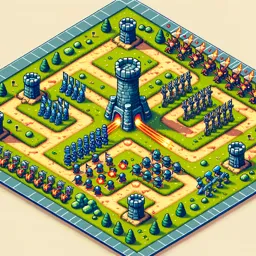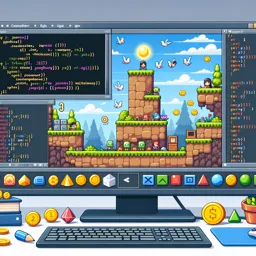Virtual Reality (VR) has become one of the most exciting frontiers in technology, transforming the way we experience games, simulations, and interactive environments. Unity, as one of the leading development platforms, has positioned itself at the core of this revolution, enabling creators to push the boundaries of what’s possible in VR. With its robust toolkit, support for multiple platforms, and constant innovations, Unity is setting new standards for immersive experiences in VR.
Advanced Rendering Capabilities
One of the key factors that make Unity a powerful tool for VR development is its advanced rendering capabilities. Unity’s High Definition Render Pipeline (HDRP) and Universal Render Pipeline (URP) allow developers to create stunning visuals that elevate the sense of presence in virtual environments. This enhanced visual fidelity helps bridge the gap between the real and virtual worlds, making scenes feel more lifelike and engaging.
The integration of real-time lighting, reflections, and complex shaders enables developers to create environments that respond dynamically to the user’s movements and interactions. This level of detail is essential in VR, where visual realism plays a crucial role in maintaining immersion and reducing user discomfort.
Optimized Performance for Smooth Gameplay
Performance is critical in VR, where even slight delays or glitches can disrupt the user experience. Unity addresses this challenge by providing tools like the Unity Profiler and Frame Debugger, which allow developers to monitor and optimize performance in real-time. With support for multi-threading, batching, and GPU instancing, Unity ensures that VR applications run smoothly across different hardware configurations.
Additionally, Unity’s Adaptive Performance feature enables dynamic scaling of graphical fidelity based on the device’s capabilities, ensuring that users have a consistent experience regardless of the platform. This adaptability is vital for VR, where maintaining a high frame rate is crucial to preventing motion sickness and providing a seamless experience.
Cross-Platform Flexibility
Unity’s commitment to cross-platform development extends to VR, supporting major platforms such as Oculus, HTC Vive, PlayStation VR, and even standalone devices like the Oculus Quest. This flexibility allows developers to build once and deploy across multiple VR systems, significantly reducing development time and costs. With Unity’s XR Interaction Toolkit, developers can create interactions and locomotion systems that work consistently across different VR devices, ensuring a unified experience.
The ability to target multiple platforms from a single codebase not only streamlines the development process but also broadens the potential audience for VR content, making it easier for developers to reach more users and maximize the impact of their projects.
Immersive Interactions and Realistic Physics
Beyond visuals, Unity provides tools to create highly interactive and physically accurate environments. Unity’s physics engine, combined with its XR Interaction Toolkit, enables developers to design realistic object interactions, responsive hand tracking, and tactile feedback. This level of interaction is crucial for making VR experiences feel natural and intuitive, allowing users to interact with the virtual world in ways that mirror real-life behaviors.
Moreover, Unity’s support for haptic feedback and external devices means developers can incorporate sensations like vibrations or resistance, further enhancing the sense of immersion. For VR training simulations or educational applications, this realism is invaluable in creating effective and engaging experiences.
Innovations in Multiplayer and Social VR
Social VR experiences are becoming increasingly popular, enabling users to connect, collaborate, and share virtual spaces in real-time. Unity’s networking solutions, such as Netcode for GameObjects and the Unity Multiplayer Service, empower developers to build complex multiplayer VR applications with ease. These tools support voice chat, spatial audio, and synchronized animations, making interactions between users feel natural and responsive.
With Unity’s focus on real-time collaboration and cloud-based solutions, creators can now build shared VR environments that go beyond traditional gaming. From virtual meetings and classrooms to shared creative spaces, Unity is enabling new forms of social interaction and collaboration in virtual worlds.
Looking Forward: The Future of VR with Unity
As VR continues to evolve, Unity is poised to remain at the forefront of innovation. With ongoing developments in AI integration, machine learning, and cloud-based streaming, Unity is expanding the possibilities for what can be achieved in virtual reality. The company’s commitment to accessibility and cross-platform development means that the future of VR will be more inclusive, allowing more creators and users to explore the limitless potential of this technology.
In conclusion, Unity’s comprehensive suite of tools and its focus on visual fidelity, performance, and cross-platform support make it an ideal platform for pushing the boundaries of VR development. Whether it’s for gaming, training, or social experiences, Unity is empowering developers to create virtual worlds that are more immersive and interactive than ever before.
































